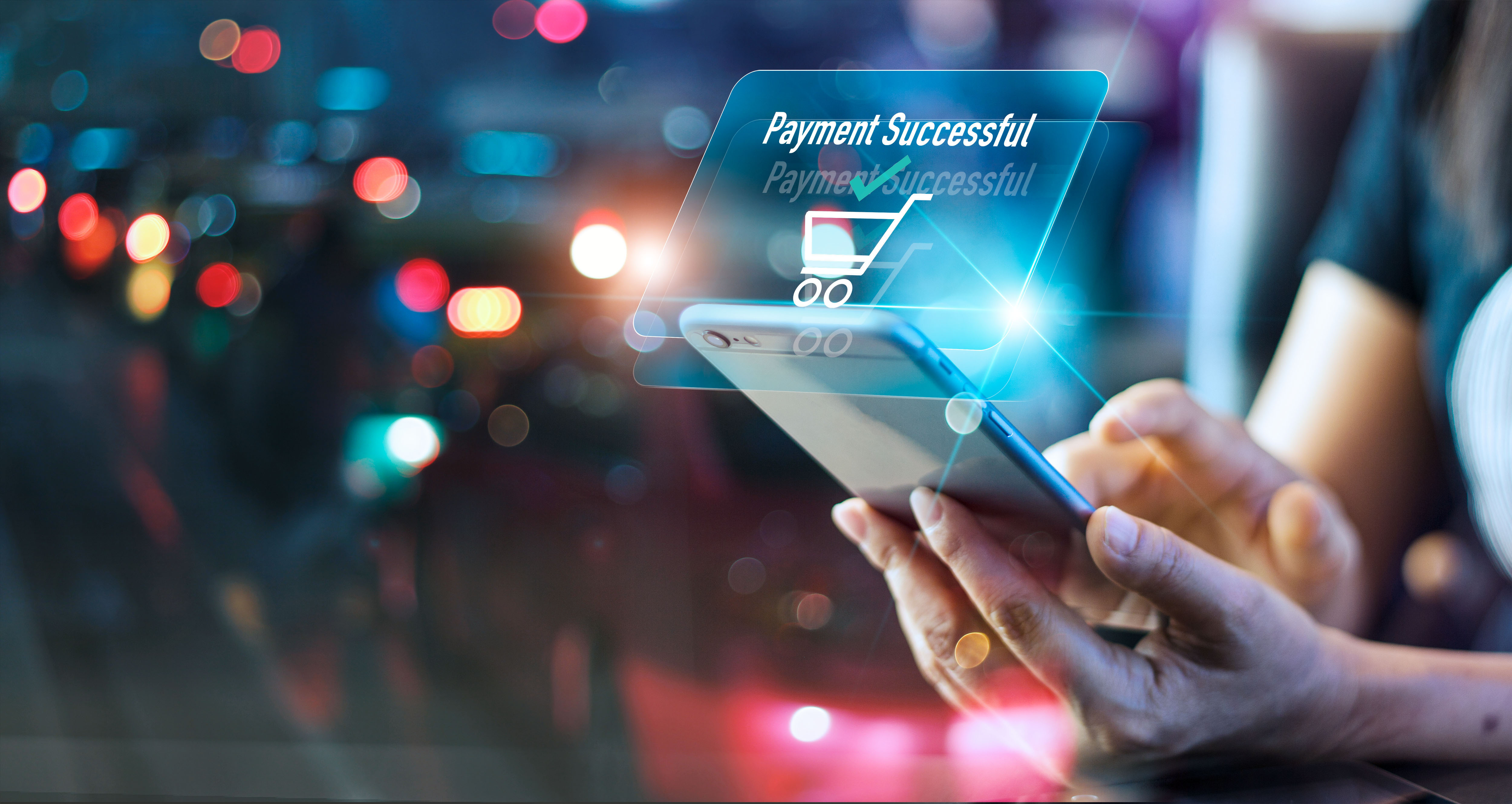Shouldn’t B2B payment options be easy?
As individuals, we’re used to having a variety of payment options when shopping online, dining out, or making purchases at the retail checkout. Whether we're tapping to pay, using Venmo, or opting for other payment apps, we expect quick and seamless transactions to make our lives easier. The same should be true for B2B payments.
Why shouldn’t B2B transactions offer the same level of convenience and accessibility as B2C payments? The technology that powers consumer payments is equally capable of streamlining business transactions. Providing fast, flexible payment options not only enhances the customer experience but also ensures that your business remains competitive. Companies that rely on outdated payment systems risk falling behind, especially when they can't offer online payments, net terms, or other convenient options that today’s buyers expect.
In this article, we’ll compare a range of B2B payment portals designed to make transactions more efficient for both businesses and their customers. Whether you’re looking to upgrade your payment methods or enhance customer satisfaction, you’ll find the solutions that work best for you. This is not just about keeping up; it’s about staying ahead and offering the flexibility that today’s businesses demand.
The slow move to digital B2B payment methods
A B2B payment is any payment made from one business to another for products and services. The most traditional way to make a B2B payment is a paper check that's processed through a financial institution. Whether it’s handed across in person, or sent in the mail, it continues to be a B2B payment option. However, paper checks are steadily decreasing in popularity.
A check requires a few extra steps to process, including manually logging it (both by the payer and the payee), the time it takes to travel when it’s posted, and, often, the process of physically taking it to the bank and depositing it. If the payee has a new business banking account or poor credit, the bank has the option of holding the funds on the check—often for up to 10 business days—until the funds clear the banking system. This delays receiving the funds and creates another step.
There’s one more problem with paper checks. They can get stolen, especially if your customer is dropping their checks into publicly accessible mailboxes. Paper checks with authorizing signatures are very attractive to certain criminals. And while bank fraud checks are often effective at flagging altered checks, a stolen check will definitely slow down the payment process.
Most companies are now exploring digital options for B2B payments through payment providers. In general, it’s been a slow process to move towards digital payments. The B2B payment industry is worth much more than the person-to-person payment industry, so there’s much more at stake.
In larger companies, payments are run through their finance system, which can include accounts receivable, accounts payable, billing, and even procurement and sales teams. Some merchants have recurring payments which is something you don’t see in most P2P (person to person) transactions.
And, of course, there’s the crucial issue of net terms. In the B2B world, offering net terms is often essential to closing sales and adding new customers.

Top reasons to find an online B2B payment solution—it's not just for B2B ecommerce
A digital payment solution, payment software, or payment app allows you to improve your accounting processes and accept electronic payments. These solutions provide real time overviews so you can see who’s paying on time, and who’s consistently paying late—which can help with cash flow. You can take action to ensure that late payers switch to payment terms that use up-front payment, or stricter net terms.
Digital payment solutions also make it easier for customers to pay you. Instead of all the steps involved with writing and issuing a check, they can usually pay their invoice with a single click. Easier payments mean faster payments and help with improving both cash flow and your balance sheet.
Of course, digital solutions also make record keeping easier. Using a B2B payment solution, you (or your accounting team) can streamline processes, incorporate automation, eliminate or lower the risk of errors, and take advantage of automating many things, like recording payments and issuing payment reminders.
What about saving money? Yes, that’s another advantage of digital B2B payments. Processing every check cost about $2—that’s on each side of the payment process. And as your business grows, those costs add up.
Finally, using a third party for your online B2B payments is secure. All reputable online payment organizations have high investments in ongoing security processes.
The main payment methods for B2B transactions
Before we go further, let’s look at the main ways companies can process their business-to-business payments. The first (and one we’ve discussed already) is checks. These include traditional paper checks and electronic checks.
Another ‘old school’ method that is still used is wire transfers. These are money transfers routed through banking systems primarily using the SWIFT network. Although wire transfers are very secure, they’re a hassle and they’re expensive. Businesses need exact banking information from their customers—including information they might not have readily available. Transfers tend to take at least a day to go through after everything is verified, and cost about $30, which is paid by the sender. The recipient may also need to pay a fee, depending on their banking agreement.
Electronic bank transfers (also called ach transfers or funds transfers) are much simpler than wire transfers. They go through a system you’ve probably heard of called Automated Clearing House (ACH). The costs are much less.
Many B2B sellers and B2B businesses still take credit card payments. These are easy to process, and the payer can take time to pay their credit card balance. However, most businesses that accept credit cards are paying a premium of 1-3% of each transaction. (Debit card transactions are much lower, but don't buy the customer any time to make the payment to their account.)
The final method is a payment gateway, and that’s where we are going to focus for the rest of this discussion. This is an online platform that allows for payment of a B2B invoice.
Who offers payment gateways for B2B payment processing?
There are a lot of applications and businesses offering B2B payment systems. Considering the B2B payment experience can affect your customer relationships (think of a customer trying multiple times to pay their invoice on a confusing payment screen), we highly recommend checking the reviews for any company before signing up. And definitely take advantage of any who offer a free trial.
PayPal
Yes, there are still a lot of businesses that are using PayPal. After all, it’s well known, safe, and many businesses already have a PayPal account. You can use PayPal to send invoices directly to your customers and to receive payments. You can also schedule invoices and accept installment payments.
There are a few things to consider: PayPal doesn’t work with net terms. So, if your customers only work with businesses that offer net terms, this isn’t the business transaction platform for you. As well, PayPal’s transaction fee is 2.9% plus $.30 per transaction. Note: There’s no fee if your customer pays with their PayPal balance or linked bank account.
Square
Again, a well-known name. You can invoice and receive payments through Square and you’ll pay the processing fees of 2.9% plus $.30 per payment for digital invoicing. It’s also possible to send automatic payment reminders to customers who are late paying.
Square doesn’t offer options for net terms.
QuickBooks
If you already use QuickBooks, you might be familiar with their invoicing options. You can send invoices via your customer’s email and use something called progress invoicing for any payments made in installments.
ACH payments don’t have additional fees, but credit card payments are 2.9% of the invoice plus a $.30 fee unless you upgrade to a monthly fee or meet their minimum monthly invoicing threshold.
Stripe
Stripe is a fairly popular payment service provider for small businesses and solo entrepreneurs. The platform is easy to use, and the fees are the same as other platforms (2.9% and $.30 per transaction). When you want to do more with Stripe, you may have challenges integrating their services, but it’s a great platform when you’re a startup.
Chargify
This is a subscription payment management platform. Their rates are tiered and based on monthly revenue plus a base price. Great for businesses that have varied/changing billing, but you’ll need to integrate a 3rd party payment gateway and a merchant account.
Resolve
Resolve includes a payment management platform with their suite of services. One of their unique offerings is that the payment management platform is branded for each business. This gives your customers the confidence of feeling that they’re dealing directly with you, instead of a third party. Using this platform, payments can be made through every method: credit card, ACH, wire transfers, and checks.
You’ll also have access to their exclusive AR and credit dashboard so you can access soft credit checks on your customers. With this creditworthiness information, you can confidently extend net terms to customers that are customized to their ability to pay. Resolve then provides credit management services, as well as issuing direct deposit advance payments of up to 90% of invoices from approved customers within one day.
The right B2B payment platform
As a business owner, finding the right B2B payment platform is really about meeting your company’s unique needs. Are all your transactions straightforward, with customers who consistently pay on time? Do you need credit management services? Which platforms are compatible with your accounting software? Better yet, which platforms allow you to automate accounting processes and save on labor? Which ones offer practical functionality and ease of use? Can they accept mobile payments?
The right platform will also allow you to scale your business without needing to change platforms or accounting processes. With the new opportunities available thanks to advances in technology—and new thinking about how to serve the needs of businesses—there’s no need to struggle with antiquated payment systems.







